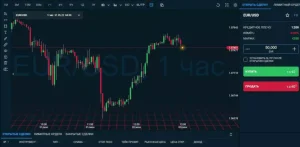We are living in an era of significant upheaval in the world of finance and payments. Recently, the word “fintech” has become increasingly common. The development of digital payment technologies has led to a boost in online operations. Not long ago, people paid for purchases only in cash, but today, they make up less than 20%. According to PWC, by 2030, the spread of online payments globally will increase by 200%.
Changes are happening rapidly, with different sectors and regions adopting them at different rates. Today, it is difficult even to imagine the future of digital payments. At the same time, by monitoring trends and assessing the state of affairs in different countries, we can get a general idea of the transformation of electronic funds transfers (EFT). Below, we will discuss the main trends that deserve our attention.
Understanding Digital Payment Technologies
Digital payment technologies form a financial environment that provides stable financial operations without cash. Such tools allow firms and ordinary people to send money, pay for purchases, and control their savings with electronic devices and various software, including applications, online banking solutions, mobile points of sale (mPOS), etc.
Such systems are based on modern communication networks. Innovative encryption algorithms and complicated dataset transfer algorithms form secure channels that identify and protect any capital movement. This ensures the safe transfer of confidential information between the sender, the recipient, the bank, and the payment server.
The primary advantages of online payment solutions are fast operations, maximum safety, and the ability to perform them from any country. This is especially crucial for developing countries, since the local population can participate in a wider financial system through their gadgets. Let’s consider what technologies underlie modern payment solutions.
- Near Field Communication (NFC). It is a short-range wireless communication algorithm that enables contactless data exchange between gadgets, usually within a few centimeters. NFC is utilized for purchases with Google Pay and Apple Pay. To complete an operation, the client must hold the gadget close to the terminal.
- Magnetic Secure Transmission (MST) technology. It enables mobile gadgets to emulate a standard magnetic stripe card. This ensures contactless payments at terminals that accept such cards. Now, online wallets can work with standard card readers, expanding their functionality.
- Artificial intelligence (AI). Such tools are crucial to determine and avoid fraudulent schemes. AI may cooperate with colossal databases in real time to notice suspicious activity. Smart systems also have a positive effect on system integration and financial analytics.
- APIs. Application programming interfaces (APIs) ensure constant cooperation between payment systems, banks, and commercial websites. They offer real-time information exchange, allowing for quick processing of operations on any platform.
The listed digital payment technologies significantly boost the functionality of modern commercial software and enhance its security.


Turnkey Brokerage Solution For Your Business
Get the most profitable fully licensed fx/crypto brokerage software or ready-to-operate business in 48 hours. Best-in-class web & mobile trading platforms, sales-driven CRM, full integration with MT4/5, and 150+ payment providers.
Digital Payments Trends to Watch
The digital payments industry is constantly changing due to the active AI application, changes in client needs, and the fintech market. Shortly, we will see the development of several key trends that will shape the online payments landscape. We will discuss them in more detail below.
Blockchain and cryptocurrencies
Blockchain is a decentralized technology that underlies cryptocurrencies like Bitcoin, Ethereum, and stablecoins, including USDT or USDC. It offers secure and transparent peer-to-peer operations without intermediaries. Cryptocurrencies simplify digital operations, allowing clients to transfer assets around the world with minimal fees compared to standard bank transfers. Large organizations like PayPal and Visa deal with crypto operations. At the same time, significant volatility, energy consumption, and regulatory restrictions hinder the widespread adoption of crypto payment solutions.
Central Bank Digital Currencies (CBDCs)
CBDCs are digital versions of fiat currencies issued and maintained by central banks. Such payments innovation increases efficiency and financial inclusion while maintaining financial control. Unlike crypto coins, CBDCs are centralized and are often based on permissioned blockchains and other technologies to ensure constant control. All major global economies are exploring or implementing CBDCs to use them in retail or wholesale payments. They offer faster transactions, lower processing expenditures, and improved access for the unbanked population.
Unlike crypto coins, CBCDs are suitable for combating illicit financial operations. Centralized monitoring of all operations eliminates tax evasion, money laundering, and fraudulent schemes.

Digital wallets
These are standalone apps or browser extensions, including MetaMask, Apple Pay, and Google Wallet. They store information, crypto coins, and other digital assets, enabling stable transactions between online and offline merchants. Online wallets use advanced instruments, including NFC for contactless operations and tokenization to protect card data.
In 2025, digital wallets have skyrocketed in popularity. Over 5 billion people use them, and the operations volume is expected to reach $12 trillion by 2026. Wallet extensions increase their functionality, allowing traders to interact with blockchain applications and manage crypto assets. Security features, including biometric and multi-factor authentication, decrease the risk of fraud.
Cross-border payments
They involve transferring money between countries. Previously, such operations were slow and expensive due to bank transfer algorithms and currency conversion. New technologies, including blockchain and real-time payment networks, decrease expenditures and transaction periods to minutes or even seconds.
Cross-border activity volumes are projected to rise by 5% annually until 2027, reaching a full size of $250 trillion. This is due to the growth of operations in developing countries through mobile software. CBDC interoperability and individual country initiatives are aimed at simplifying global operations through direct currency exchange. However, rapid changes in exchange rates can make it difficult to determine the exact amount of the operation.
In the emerging markets of Latin America, Asia, and Africa, online payment ecosystems are developing rapidly.
Payment Security
Such an area covers tools to protect digital operations, information leaks, and cyberattacks. Let’s look at several popular technologies.
- Tokenization. This system allows you to mark sensitive user information with unique digital tokens.
- Biometric authentication. Such a technology uses fingerprints or facial recognition to confirm identity.
- AI and machine learning (ML). Smart instruments are utilized to determine fraud in real time, study transaction patterns, and seek deviations.
According to research, by 2027, global fraud prevention costs will exceed $40 billion. Experts are currently developing quantum-resistant encryption protocols to avoid threats associated with future quantum computing.
European and US legislation requires strict customer authentication, which increases security but complicates the activity of merchants.
Open banking
This technology allows third parties, including payment services, to access users’ banking information via APIs with the consent of the client. It allows third-party platforms to offer personalized financial services, including lending, budgeting, and financial operations.
A recent study from Juniper Research has shown that the cost of open banking operations will reach $330 billion around the world by 2027; up from $57 billion in 2023. The highest growth is observed in the Asia-Pacific region and North America.
Open banking enhances the client’s experience by integrating payments, savings, and investment services into unified platforms.
The online payment sector is booming, and many interesting digital payment technologies in this sector need to be discussed. The primary vectors of development are related to the spread of mobile gadgets, the adoption of cryptocurrency, and the use of AI. The latter also increases the safety of the sector.
There are also less common trends, including “buy now — pay later” (BNPL) or split purchases as a type of credit card. The significant popularity of QR codes and the emergence of flexible mobile applications can also be added to the mobile technology section. It means that startups and merchants need to monitor the trends of the global financial sector, as they offer many valuable ideas.






